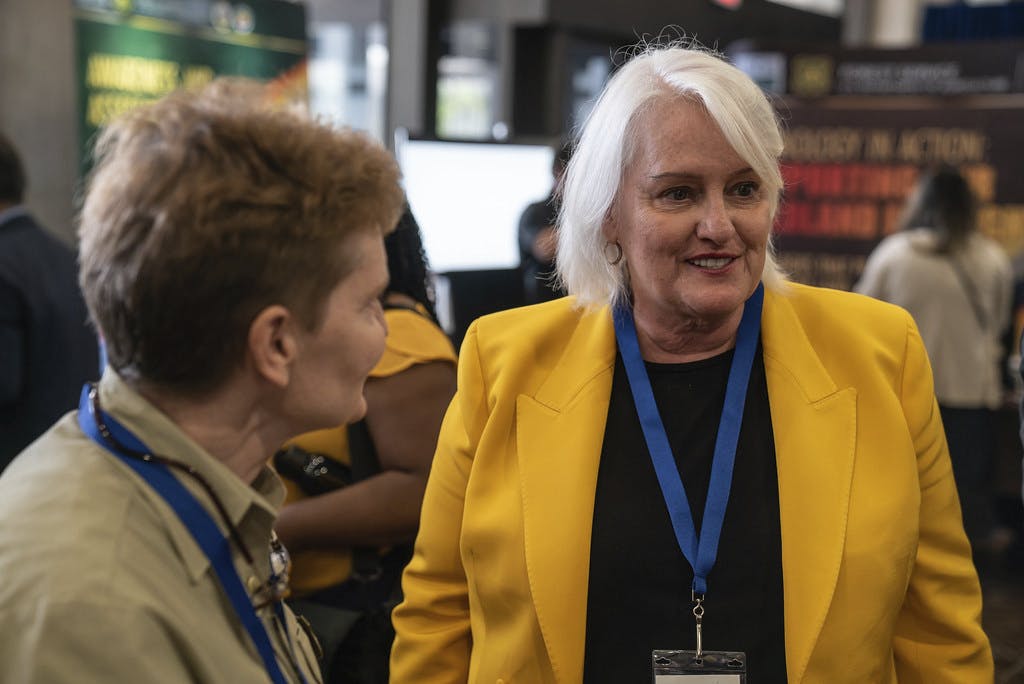How Health Tech Leaders Use AI to Combat Fraud
Following the Public Health Emergency, fraud, waste, and abuse prevention continues to be a top priority for the Centers for Medicare and Medicaid Services.

The Centers for Medicare and Medicaid Services (CMS) is using artificial intelligence (AI) and machine learning (ML) to combat and prevent fraud, waste and abuse. According to the National Health Care Anti-Fraud Association (NHCAA), health care fraud results in losses estimated at tens of billions of dollars every year.
“Although no precise measure of health care fraud exists, we note that fraud is a moving target and we often find it by going backwards in time and investigating,” a CMS spokesperson told GovCIO Media & Research.
During the height of the COVID-19 pandemic, the public health emergency (PHE) provided an opportunity for fraudsters to thrive. “During the pandemic, fraudsters used the expansion of telehealth as a means to exploit beneficiaries by making offers of COVID-19 testing or vaccines in exchange for the beneficiaries Medicare information,” a CMS spokesperson said.
As a result, fraudsters committed identity theft and billed Medicare for care that was never delivered or not needed.
According to a 2022 Government Fraud Waste and Abuse survey, 53% of government fraud investigators focus on fraud detection, and only 27% focus on fraud prevention.
But as technology advances, CMS is developing new tools and resources to prevent fraud.
“We use artificial intelligence and machine learning to find potential fraud that would not be apparent to the human eye. We try to use the latest technology to make potential fraud easier to detect more quickly,” CMS said. “Once a scheme is identified, it is addressed through vulnerabilities analyses, referral to law enforcement, administrative actions or by pushing changes to existing policies and regulations.”
To combat ongoing fraud, the Center for Program Integrity (CPI), a division within CMS focused on detecting and combatting fraud within Medicare and Medicaid programs, increased communication with law enforcement and additional stakeholders.
“CMS’s efforts to expedite the identification and investigation of fraud during the PHE contributed to numerous successful law enforcement actions, marked increases in the number and amount of charged health care cases and hundreds of millions of dollars in savings related to administrative enforcement actions,” CMS said.
Protecting the integrity of Medicare and Medicaid programs is essential, and effective oversight and enforcement is key. Even though the public health emergency has since ended, the most common form of fraud — medical identity theft — persists.
“Fraudsters may offer COVID-19 tests, vaccines, or other health care services in exchange for personally-identifiable information to commit identity theft or to fraudulently bill medically unnecessary services to the Medicare and other federal insurance programs,” CMS said.
The Department of Health and Human Services Office of the Inspector General (HHS OIG) warns the public against buying fake vaccine cards, offers to purchase COVID-19 vaccination cards, COVID-19 survey scams, and requests for personal, financial and medical information.
This is a carousel with manually rotating slides. Use Next and Previous buttons to navigate or jump to a slide with the slide dots
-

Cyber Incident Reporting Regulation Takes Shape
An upcoming CISA rule aims to harmonize cyber incident reporting requirements for critical infrastructure entities.
5m read -

Connectivity Drives Future of Defense
The Defense Department is strategizing new operating concepts ahead of future joint force operations.
8m read -

5 Predictions for AI in Government Technology
Agencies are setting plans in motion not only to integrate AI into their enterprises, but also ensuring the data that power these systems are fair.
41m watch -

Agencies Meet Key AI Goals Amid Call for More Experimentation
Federal leaders call for prioritizing artificial intelligence and its applications to critical cybersecurity and workforce initiatives.
7m read








